Nick Ahmed has always been a guy on the fringes of fantasy relevance. He’s never been in the majors for his bat, especially considering he’s hit under .240 in every season except two since his rookie year in 2014, but rather for his defense, as he’s had over 20 defensive runs saved last year and so far this year.
But Ahmed has always had these stretches where he’s someone you look at on the waiver wire in a deep league and say “Do I really need him?” He’s been semi-useful in deep daily leagues when you can slot him in against lefties, as he’s a career .282/.329/.472 hitter against lefties, but generally speaking, Nick Ahmed has been one of those guys who’s always sitting on your waiver wire.
That is, until this year. As of this writing, Ahmed is the second-most added player in ESPN fantasy leagues, and that’s been thanks to the fact that the guy has been crushing the ball since the All-Star break, slashing .295/.386/.557 during that timespan.
The first half of the season, Ahmed looked basically like his normal self, albeit with a higher batting average, slashing .262/.311/.429. Not a godawful line, but not someone you want on your fantasy team. So what’s happened? Is this second-half hot streak just that—a hot streak? Or is there something here?
Ahmed’s second-half improvements
There are some pretty noticeable improvements that Ahmed has made to his approach in the second half of this year that make me think this tear he’s on might just be somewhat real. However, there are some things I see that give me some pause.
But first, the good. Probably the most noticeable thing about Ahmed’s second-half has been his increase in power, as he’s sporting a .262 ISO in that time, a massive increase over his .167 ISO in the first half. So what’s happened? Has he increased his launch angle?
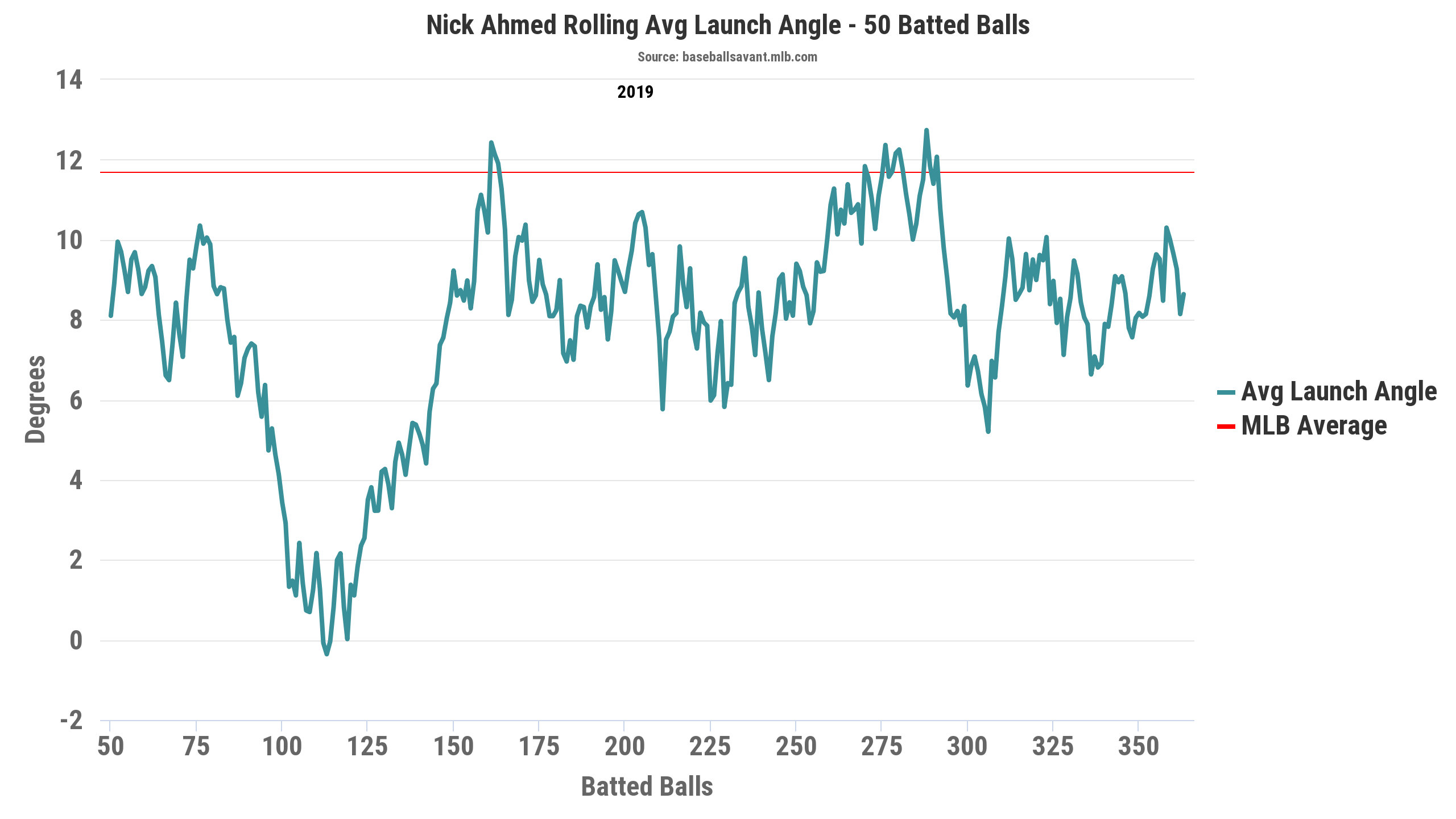
Actually, no. His launch angle has been a pretty paltry 8.4 degrees, so it’s not that.
There have been two big keys to his second-half power increase. First, he’s hitting the ball harder:
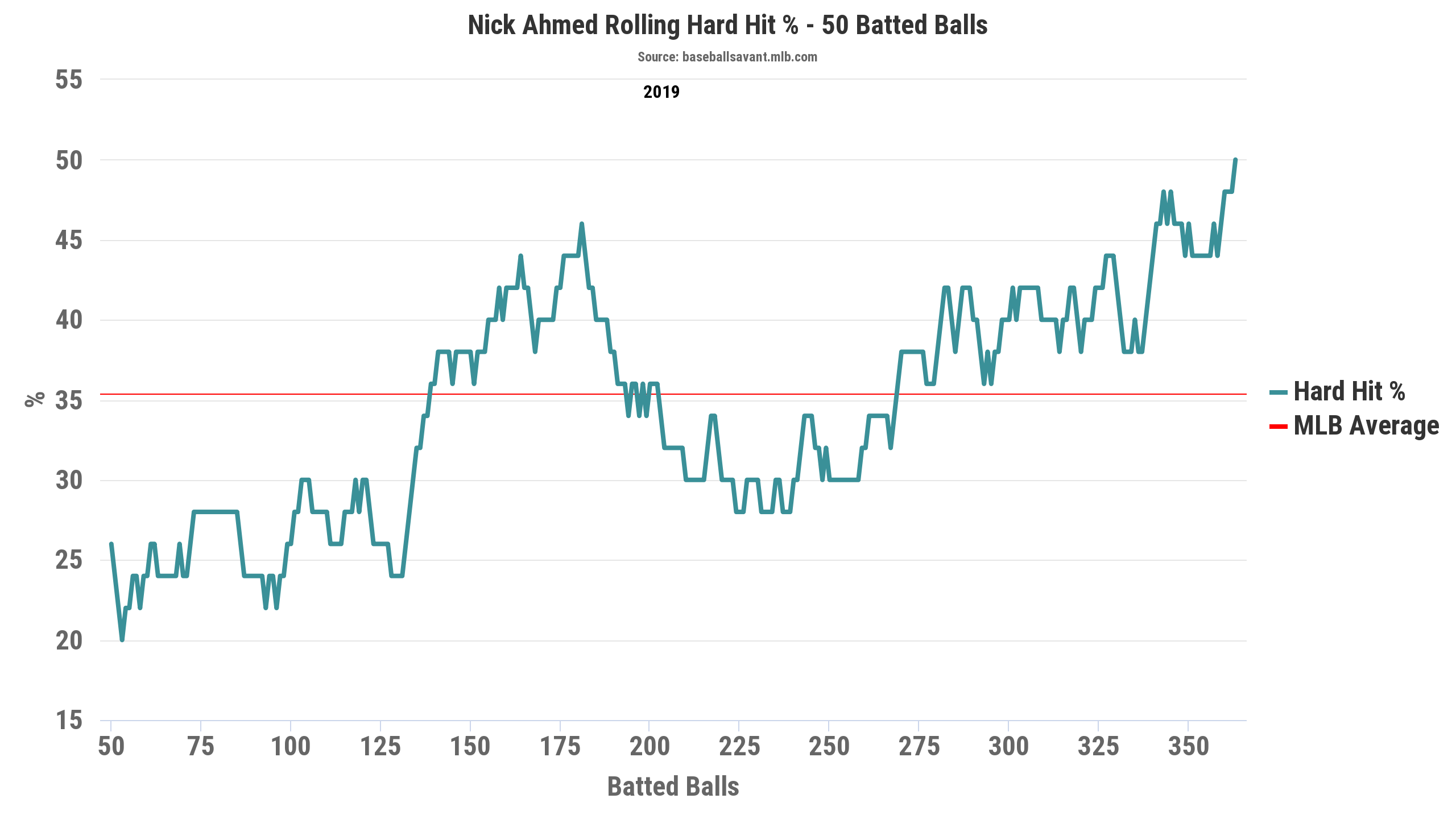
And more importantly, his barrel rate has shot up:
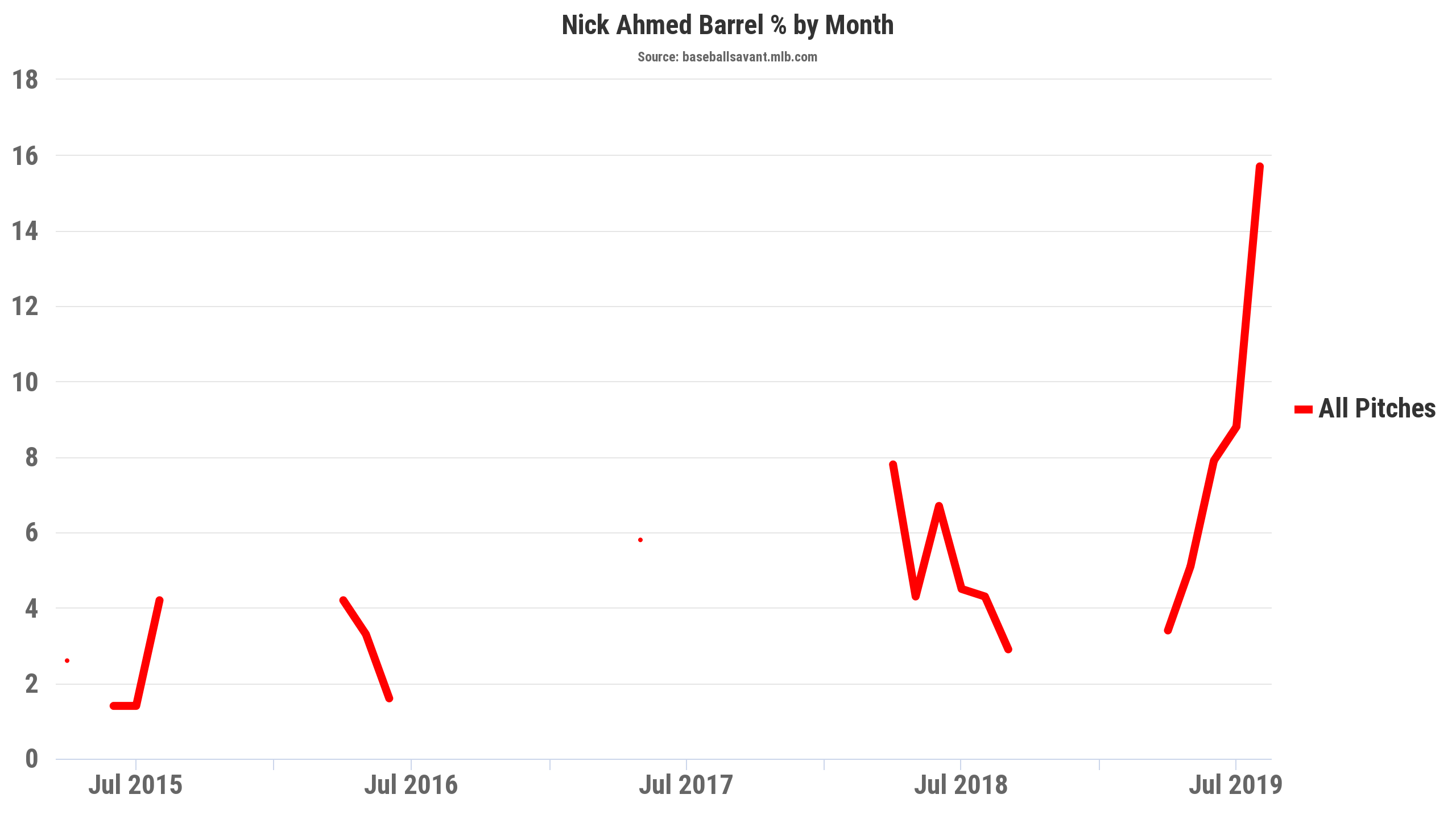
Especially against breaking balls:
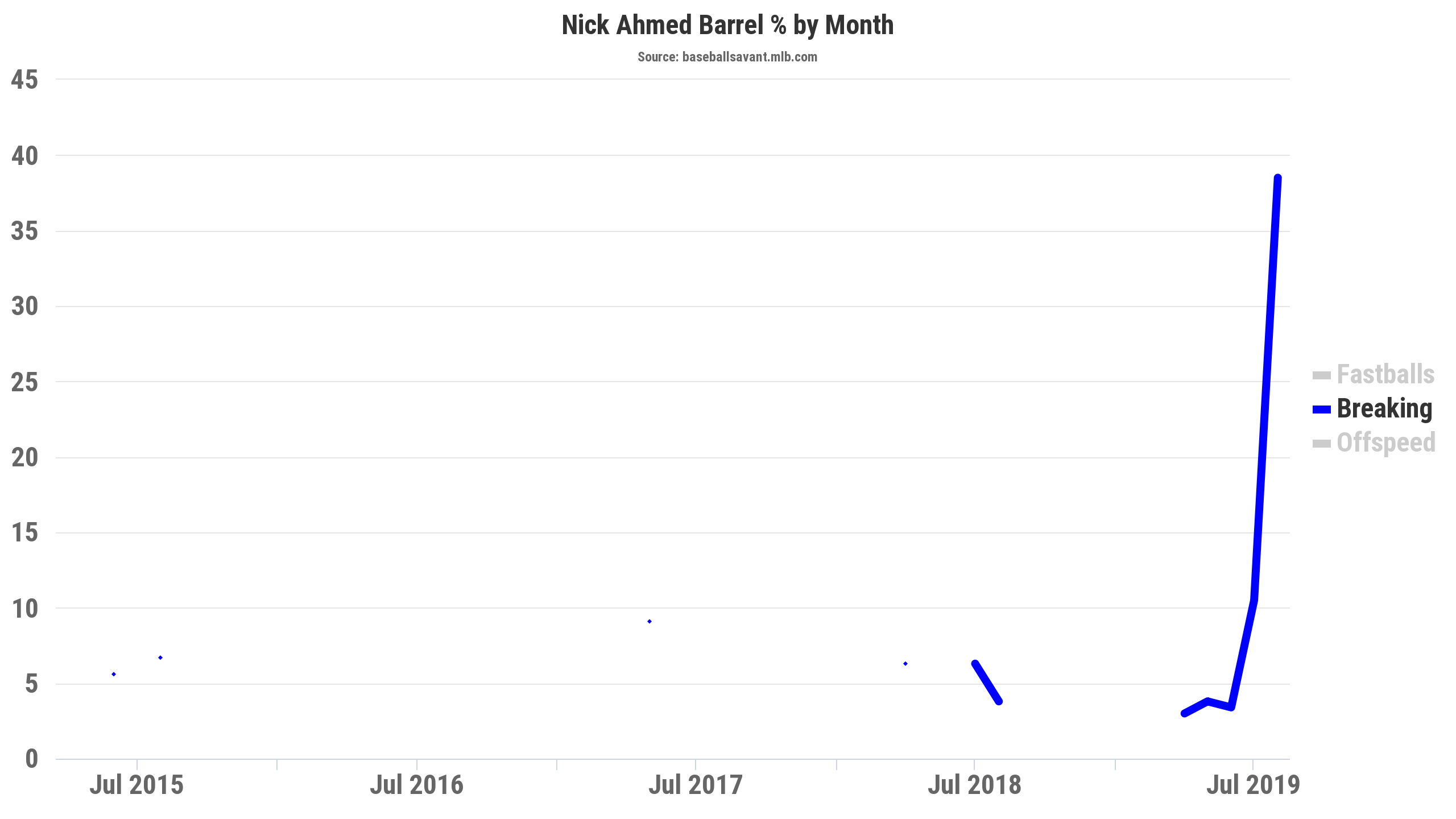
So while his average launch angle hasn’t been much in the second half, he’s been hitting the ball harder and at the right angle a lot more than he did before. And, he’s seeing breaking balls a lot better than he did before.
Take a look at his pitch type linear weights in the first half and second half. These are standardized (in other words, per 100 pitches) runs above average for Ahmed by pitch, where a score of zero is average, negative is below-average, and positive is above-average:
| wFB/C | wSL/C | wCT/C | wCB/C | wCH/C | wSF/C | |
|---|---|---|---|---|---|---|
| First half | 0.47 | -0.19 | -3.16 | 1.57 | -1.86 | -5.19 |
| Second half | 1.37 | 0.54 | 1.61 | 4.96 | 5.37 | 11.97 |
He’s hitting every type of pitch better, but he has really figured out how to hit breaking balls better when they were giving him a lot of trouble in the first half.
Ahmed has also improved his plate discipline significantly in the second half compared to the first, sporting a 13.8% walk rate in the second half, compared to 6.8% in the first, and a 12.4% strikeout rate in the second half, compared to a 19.9% rate in the first.
No surprise, he’s also seen his chase rate and SwStr rate drop too:
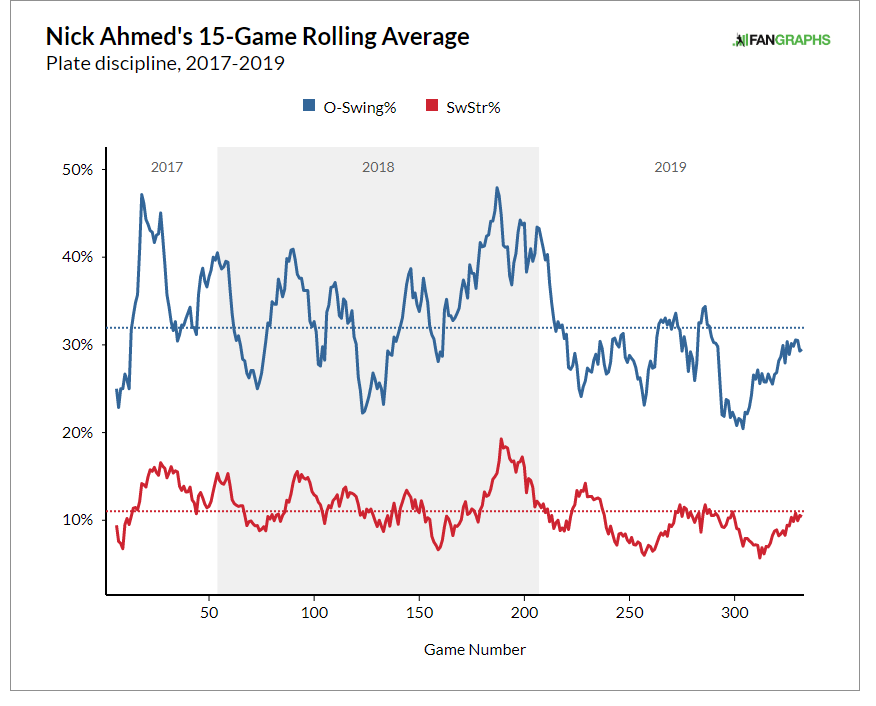
And even better, Ahmed’s expected stats over the second half line up just about as close as I’ve ever seen expected and actual stats line up:
| AVG | wOBA | SLG | |
|---|---|---|---|
| Actual | .295 | .394 | .557 |
| Expected | .295 | .395 | .529 |
Conclusion
So this is all totally legit, right? I think it is to an extent, but there is something that concerns me.
Usually, when you see someone make power gains like this, you expect to see their batted ball data change pretty noticeably. Now, we’ve already looked at how Ahmed’s barrel rate and hard-hit rate have changed, but when you look at how he’s hitting the ball, everything looks pretty much the same:
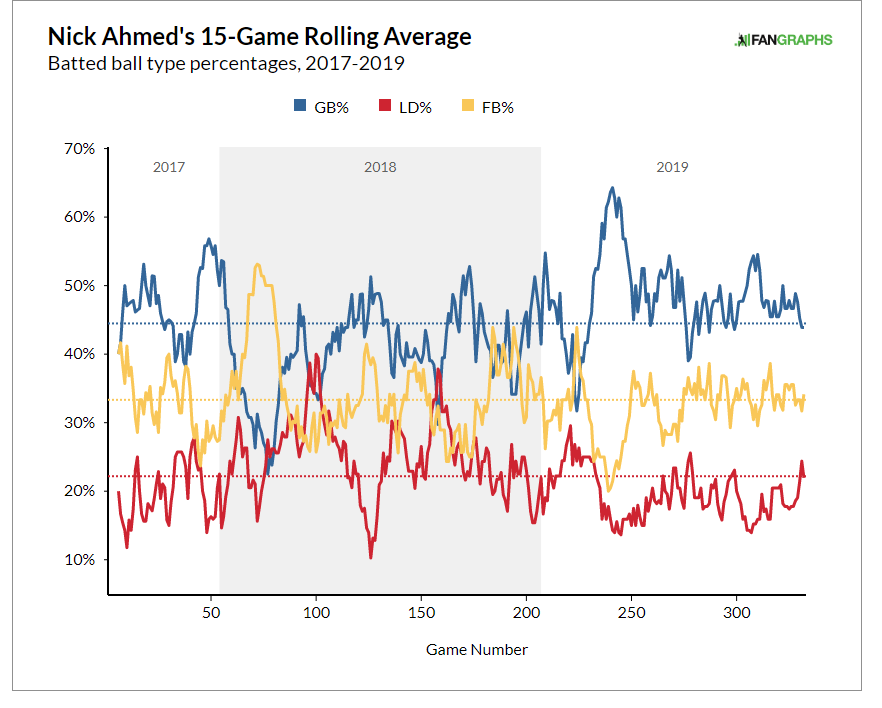
Actually like, really the same. Here’s what that graph looks like from a numbers perspective:
| LD% | GB% | FB% | HR/FB | |
|---|---|---|---|---|
| First half | 20.6% | 47.4% | 32.0% | 11.1% |
| Second half | 19.6% | 47.7% | 32.7% | 22.9% |
He’s hitting the same amount of line drives, groundballs, and fly balls. The only difference is that last column (which wasn’t on the graph)—the massive jump in HR/FB rate.
I realize Ahmed is hitting the ball harder, and that’s great, but I don’t think he can keep up a 22.9% HR/FB rate. That’s pretty insane, and something only the greatest power hitters in baseball do. That, coupled with the fact that his batted ball data in the second half is almost identical to the first half and the fact that he’s got a pretty below-average launch angle, makes me a little nervous.
Ultimately, here’s what I think you should do with Nick Ahmed from a fantasy perspective: First and foremost, I do think you should pick him up if you need him (he’s still available in 65% of leagues). The guy has been on a hot streak, and whether you believe this is legit or not, you should milk that hot streak for all it’s worth.
However, I think you should prepare yourself for this hot streak to end. I do think Ahmed has made some significant improvements to his approach at the plate, that’s pretty clear. However, I think Ahmed’s real talent is somewhere in between what’s happening now and what we’ve seen from him in the past.
I think he can give you a pretty good average and probably a pretty decent OBP, given how much his plate discipline has improved, along with some decent power the rest of the way. Is that valuable? In a league where power is coming easily, perhaps Ahmed isn’t insanely valuable, but if you have a need at shortstop, or just on offense in general and you have the roster spot, he’s certainly someone to consider.
(Photo by Cliff Welch/Icon Sportswire)

